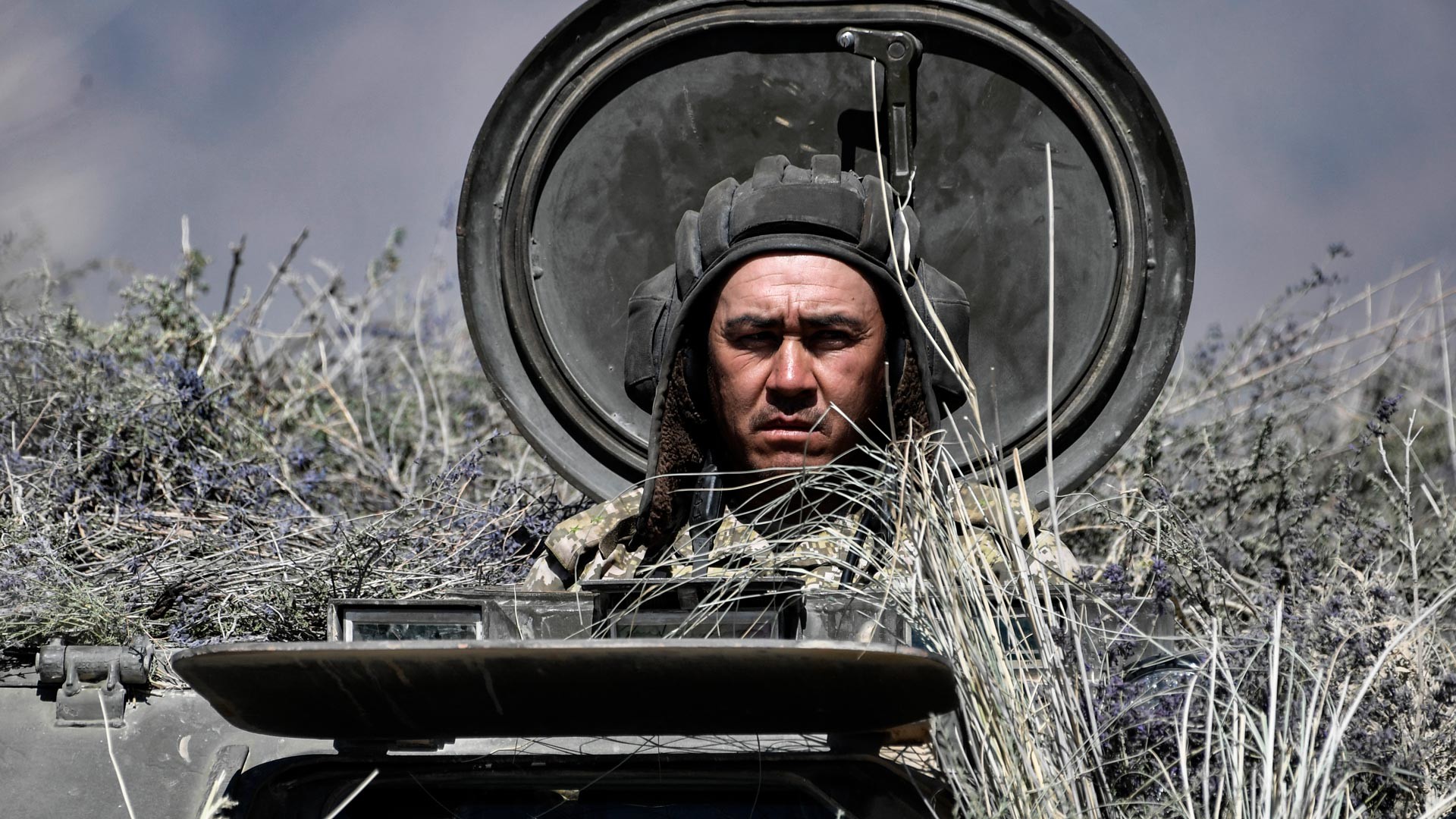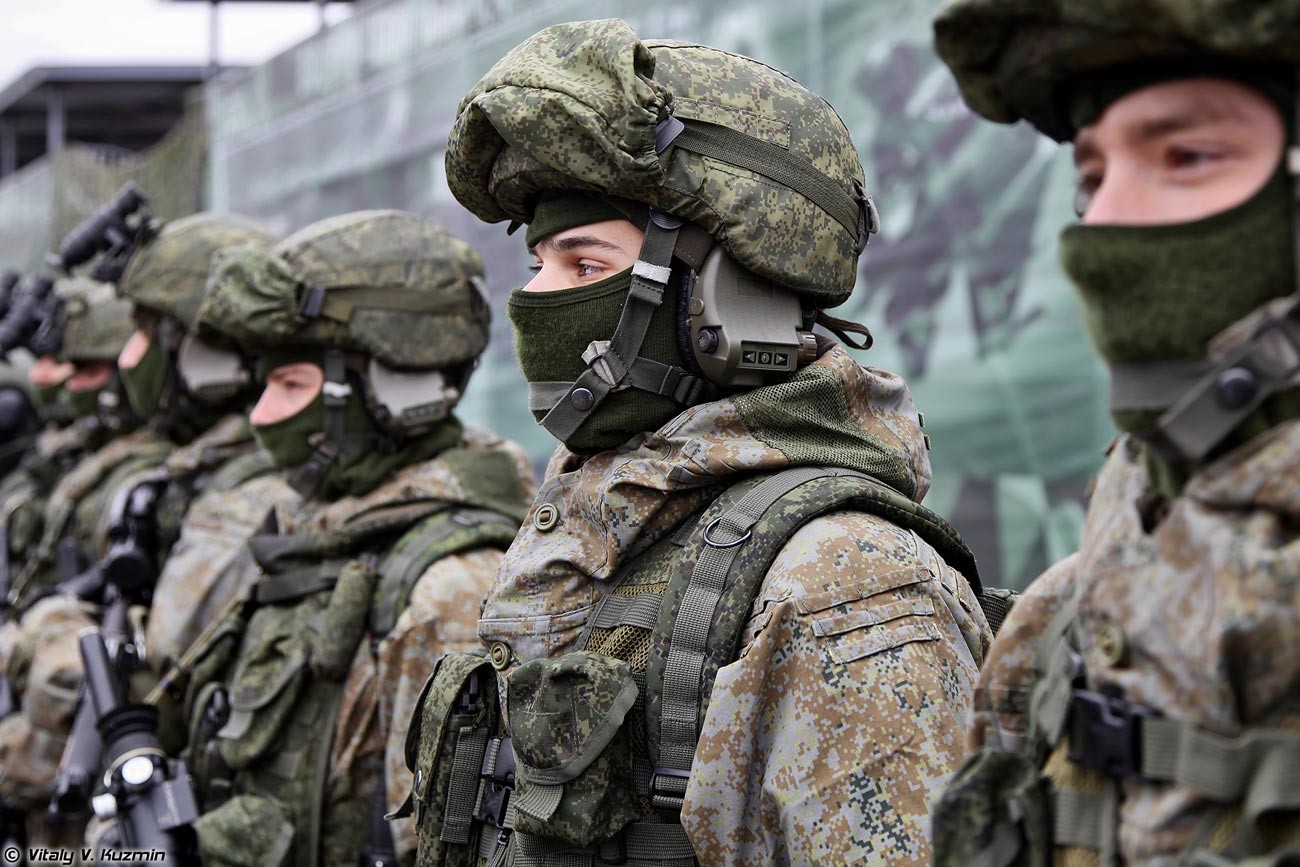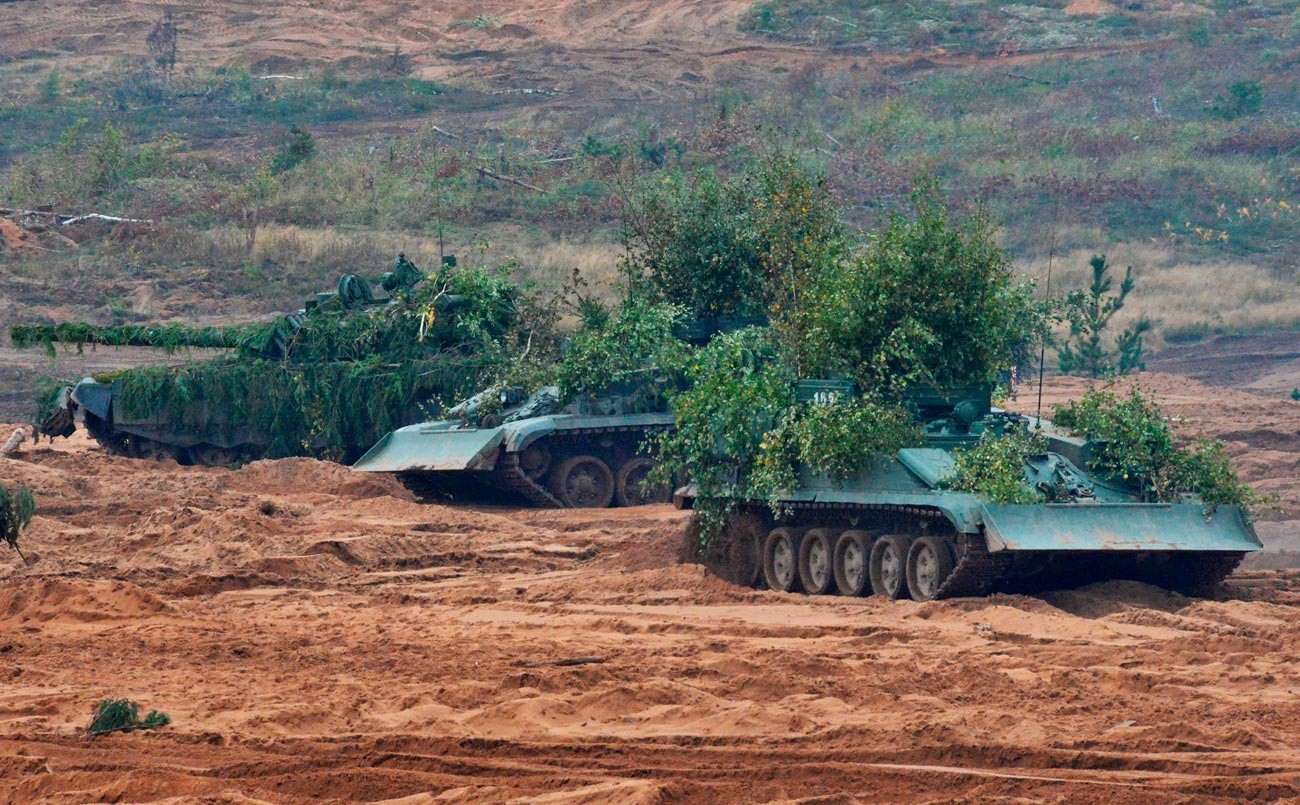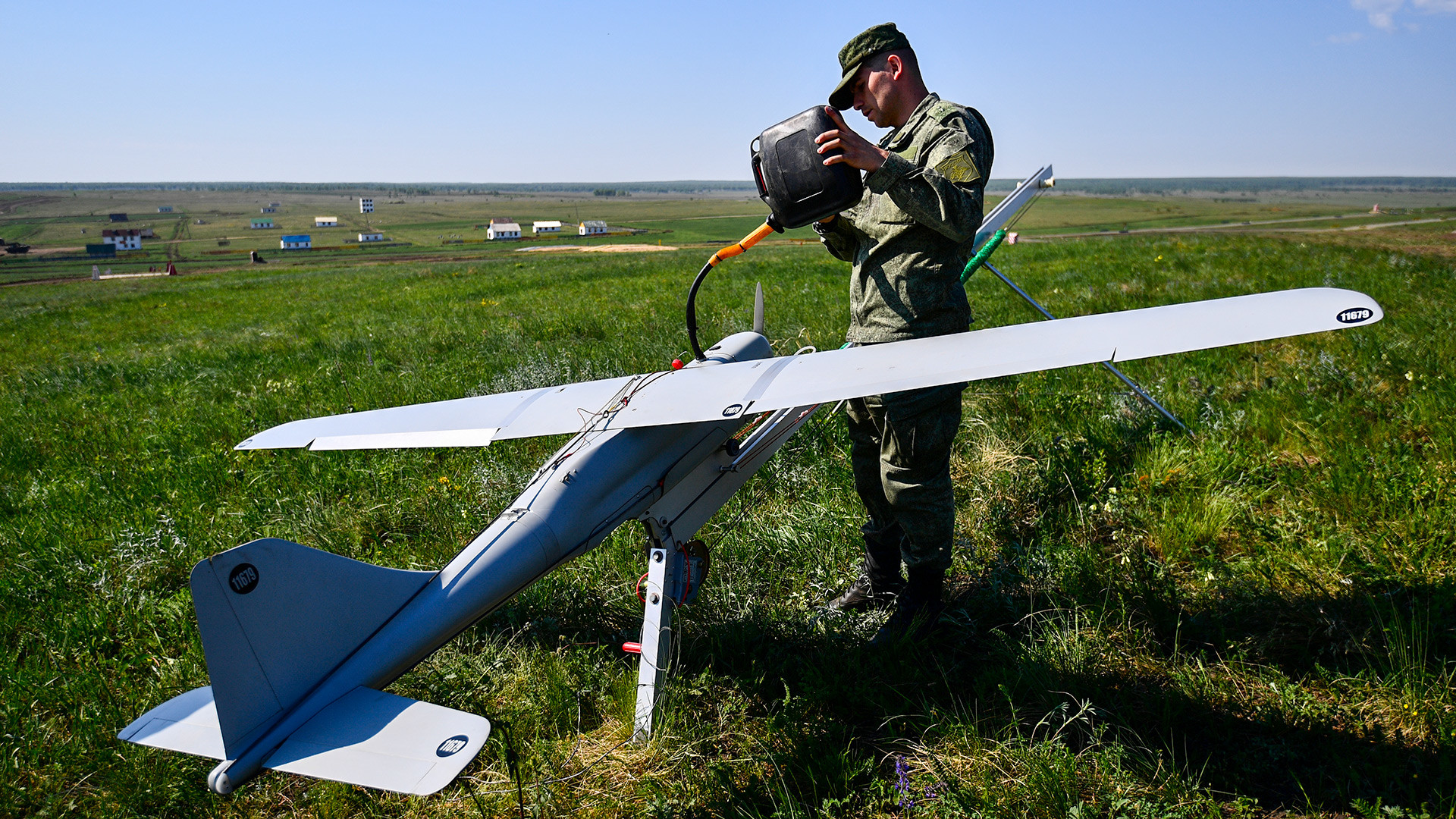New camouflage to make the Russian army almost invisible to enemies

The new camouflage technology has been nicknamed Chameleon. It is based on so-called electrochromic “glass” that consists of composite materials and changes color and transparency when an electrical current is applied.
The first prototypes of such an electrochromic coating for the battlesuit of the soldier of the future, the Ratnik, were demonstrated at the Army-2018 international military and technical forum in Russia. And, in early October 2021, RIA Novosti news agency, citing a source in the defence-industrial complex, reported that the new camouflage system was already being tested on mock-ups of armored hardware.

Ratnik military kit.
Vitaly KuzminThe camouflage works as follows: The exterior of an armored vehicle is completely covered with small electrochromic plates, each of which is connected to electric wires. Using video cameras, the system scans the entire surroundings. In parallel, it analyzes the colors and structure of the landscape and issues instructions for the coating to create a new camouflage image that will allow the vehicle to completely blend in with the terrain when seen from different angles.
The principle is borrowed from wildlife - chameleons or octopuses change their skin color to imitate the surface on which they find themselves. For example, if an octopus moves from a dark spot on the seabed to a lighter one, it quickly changes the color and texture of its skin coloring.
To what extent will armor become “invisible”?

BREM-1 armored repair and evacuation vehicles.
Pavel Gerasimov/Sputnik“This technology is not new - it has been used in the civilian sphere for a long time. It is the so-called smart glass that is sometimes installed in ‘meeting rooms’ in an office. When a meeting room is free, the glass is clear but, when it is occupied, it becomes tinted. But, there is certainly innovation in this military development. Such a coating is expected to quickly create a camouflage that mimics the landscape as accurately as possible, to be resistant to aggressive environmental factors and be reliable and cheap,” says Denis Fedutinov, editor-in-chief of Unmanned Aviation magazine.
According to Fedutinov, the large-scale fitting of ground-based Russian army hardware with such “capes” will render about 95 percent of unmanned aerial vehicles (UAVs) of a potential enemy practically obsolete when it comes to detecting them.
“The majority of reconnaissance UAVs belong to the class of small drones. They don’t have hardware for processing and analyzing incoming video information, either on board or in ground control systems. Data analysis is carried out directly by the drone operator, i.e. a human. It will be really difficult to detect and identify hardware disguised with the special coating,” Fedutinov explains.
According to the expert, the chameleon-like coating can be particularly effective bearing in mind that reconnaissance UAVs try to maintain a sufficient distance from an enemy so as to remain undetected themselves.
However, Chameleon won’t be a complete panacea for the protection of Russian military hardware, because it will only create a problem for simple reconnaissance drones (even if they do make up about 95 percent of all existing UAVs). If a drone is capable of simultaneously using reconnaissance equipment operating in different wavebands, then this will significantly reduce the effectiveness of Chameleon.
Also, the coating is capable of confusing only those enemy weapons equipped with TV-based optical homing heads. “For such missiles, auto lock-on can be disrupted through the use of the electrochromic coating. Furthermore, this applies both to homing heads using the photo contrast method and ones that remember the image of the target,” the expert points out.
Despite these limitations, the proposed system is a powerful addition to our army, according to Fedutinov. Hardware capable of mimicry will have a better chance of surviving in combat than equipment with conventional static camouflage, he says.
In a head-on encounter of armored infantry units of two comparable opponents, the side that has Chameleon-covered equipment will outsmart its opponent, in terms of its level of awareness and its “detection-attack” cycle rate, because its opponent won’t detect all the disguised hardware or will only detect it with big delays.
How can this camouflage be detected?

Russian Orlan-10 UAV.
Pavel Lisitsyn/SputnikStill, drones of a higher technology class with advanced multichannel reconnaissance and surveillance systems, as well as automated systems for processing and analyzing information on board, will, nevertheless, detect the Chameleon, a representative of one of the leading Russian manufacturers of UAVs says, under condition of anonymity.
“Such drones, equipped not even with thermal imagers (for which this coating is not a problem) but merely with optical sensors, will be able to detect such vehicles. High-resolution cameras and automatic algorithms for information processing and machine learning will help in this,” the source says.
The specialist explains that, for instance, the properly drilled neural network of a modern high-tech military drone easily identifies a car of a certain make in an urban environment overloaded with images - even if only part of the car’s hood can be seen sticking out from under the foliage of a tree.
“More expensive drones fitted with neural networks and appropriate sensors will find it easy to track a tank from its gun barrel, which can hardly be covered with an electrochromic coating, due to the dynamic stresses that occur in the course of firing. The neural network of such a drone will see the shadow of the tank, the tracks of its caterpillar tread, its machine gun, antennas, surveillance devices, exhaust gases, etc - in other words, a whole series of details that will nullify the disguise,” says the expert.
But, even in such a case, according to the representative of the Russian UAV developer, the new camouflage, if introduced on a large scale, will still create a problem for human operators of drones and aviation weapon operators, as well as operators and aimers of ground-based optical observation systems and the sights of combat vehicles.
“For example, if Russia uses this coating on a large scale, the NATO countries will have to think about more military spending on neural network technology and systems for processing big data for UAVs and their ground systems, for helicopters or armored vehicle instruments,” the expert concludes.
If using any of Russia Beyond's content, partly or in full, always provide an active hyperlink to the original material.
Subscribe
to our newsletter!
Get the week's best stories straight to your inbox